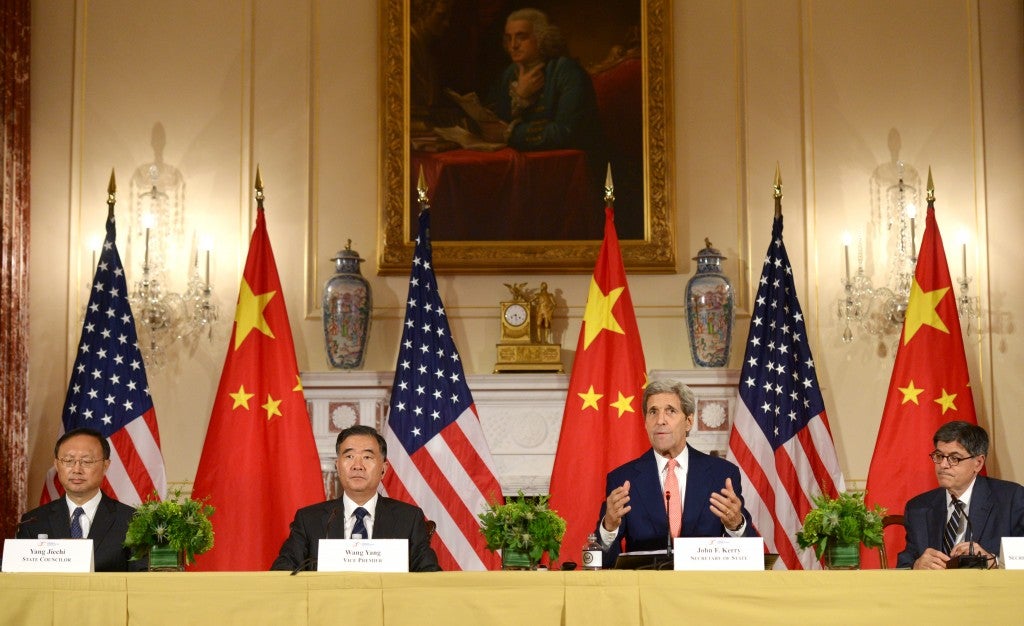Having antagonized much of the region with its island building in the South China Sea, as demonstrated by the loud chorus of concern heard at the Shangri-La Dialogue in Singapore several weeks ago, Beijing is now claiming that the islands are intended for weather observation.
“The construction of infrastructure for observation and communication is the first step towards enhancing and improving marine meteorological monitoring, warning, forecasting, prediction and scientific research,” one member of the Chinese Academy of Engineering declared.
Beijing essentially is claiming its reclamation of several thousand acres, and its construction of entire islands atop previously submerged reefs, is so it can fly weather balloons and have a convenient site for deploying weather observation instruments.
That the islands are vastly over-engineered for such purposes is self-evident—and indicative that Beijing is not especially interested in telling a convincing tale. Indeed, the more fanciful the claims, the more the Chinese are, in effect, expressing their disrespect for world opinion. Beijing already sees these islands as part of its territory and therefore does not see itself as obligated to provide a convincing tale.
But the truth is the Chinese are likely to use the islands for research and observation – not only to watch the weather, but also to ensure the region is securely in Chinese hands. The South China Sea represents both a treasure trove of resources (especially fish and potentially of hydrocarbons), and a strategic buffer for the Chinese mainland. As China’s economic center of gravity has moved to the coast, it also has become increasingly exposed to potential attack from the sea—a capability often demonstrated by the United States, whether by carrier air wings or ship- and sub-launched cruise missiles.
Consequently, the new islands the Chinese are building are likely to be home not only to more advanced fighter aircraft (which will allow the Chinese to dominate the airspace in the region), but also anti-submarine warfare helicopters and patrol aircraft. The islands also are likely to be terminals for sonar arrays under the South China Sea, which would help locate intruding boats. The Chinese have published papers discussing experiments with such arrays in the South China Sea.
The South China Sea reportedly was a major topic in this week’s Strategic & Economic Dialogue talks. China’s actions in this area likely will remain a focal point of U.S.-China tension. One can only hope Secretary of State John Kerry and other American officials do not accept the Chinese claims without challenging them.
“You must think me a fool to make your lies so transparent.”
—Klingon proverb
